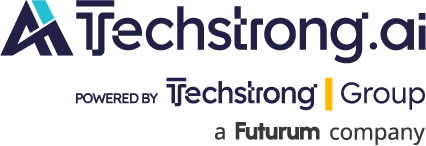
Big Tech may be booming on the artificial intelligence (AI) wave, yet job security among its rank and file is increasingly tenuous.
Deep layoffs are paralleling record contracts and growing AI revenue from the likes of Oracle Corp., Salesforce Inc., Microsoft Corp., Amazon.com Inc., and Alphabet Inc.’s Google — underscoring a mounting fear among Silicon Valley workers that AI is marginalizing them.
Cases in point: Oracle inked a $300 billion, five-year data center deal with OpenAI weeks after it sliced hundreds of jobs to curb costs. Amazon, Google, and Microsoft have done the same even as they reported rising revenue.
The tech sector endured the second-largest number of layoffs last year, trailing only government positions, according to analysis from outplacement firm Challenger, Gray, and Christmas. In particular, major tech companies are reducing headcount after significant expansion during the Covid era.
Data from job board Indeed shows tech job postings reached their peak in 2022, when the sector’s hiring growth exceeded that of the broader economy. However, that trend has now reversed, with tech companies pulling back on recruitment as they adjust their workforce levels from what many now view as unsustainable hiring during the pandemic boom.
AI could replace approximately 6% to 7% of jobs in the United States, Goldman Sachs economists project, but the investment bank maintains an optimistic outlook on the technology’s overall impact on employment.
The economists characterized potential job losses as temporary, drawing on historical precedent to support their assessment. Past technological advances that displaced workers have typically seen diminish within two years, according to their analysis.
“We remain skeptical that AI will lead to large employment reductions over the next decade,” the Goldman Sachs team said in its report. “Predictions that technology will reduce the need for human labor have a long history but a poor track record.”
Companies are reducing staff even as demand for their services continues to rise. Analysts say the wave of spending on AI infrastructure in the form of costly data centers and specialized chips supplied by firms like NVIDIA Corp. is straining corporate budgets and pressuring margins.
To offset those expenses, many companies are slowing down hiring or cleaving jobs, says D.A. Davidson analyst Gil Luria. Corporate executives are reducing expenses in other business areas to finance AI investments, with many anticipating that the technology will eventually enable them to operate with smaller workforces.
Salesforce CEO Marc Benioff revealed on “The Logan Bartlett Show” podcast that the cloud software giant reduced its customer support workforce from 9,000 to approximately 5,000 employees. The dramatic reduction stems from increased deployment of AI agents, including Salesforce’s Agentforce platform, which are now handling a growing portion of customer service responsibilities.
Benioff said AI now manages about half of customer interactions, compared to human representatives. While thousands of support roles were eliminated, Salesforce said it has redeployed hundreds of affected employees to other departments including sales, customer success, and professional services. The workforce restructuring highlights how AI automation is reshaping traditional customer service operations at major technology companies.
OpenAI CEO Sam Altman has forecast AI will eliminate entire job categories, with customer support serving as a prime example of roles that could become fully automated. Altman envisions a future where AI systems handle all customer service functions without requiring transfers to human agents or navigating traditional phone tree systems.
Amazon CEO Andy Jassy told employees in June that AI will likely result in a reduced workforce at the e-commerce giant, while encouraging staff to embrace AI tools to secure their positions within the company. Jassy suggested workers who familiarize themselves with AI technologies could gain a competitive advantage and “have high impact and help us reinvent the company.”
The CEO’s comments signal Amazon’s expectation that AI integration will fundamentally change its operational structure, potentially eliminate certain roles while creating new opportunities for workers who adapt to the technology. Jassy’s directive reflects a broader trend among major corporations preparing their workforces for AI-driven changes, positioning technological fluency as essential for career survival in an increasingly automated business environment.
Anthropic CEO Dario Amodei has warned AI could eliminate up to half of entry-level white-collar office positions within the next one to five years, potentially driving unemployment rates as high as 10% to 20% during that period. The AI company leader identified jobs involving repetitive but variable tasks as particularly vulnerable, including first-year law firm associates handling document review, administrative and finance roles, and consulting positions.
Amodei emphasized that many corporate executives are actively pursuing AI implementation not merely to boost efficiency, but specifically to reduce workforce costs and headcount. He argued that this displacement is already underway rather than theoretical, noting that current AI technology demonstrates strong capabilities in many entry-level positions and continues improving rapidly.
NVIDIA Corp. CEO Jensen Huang has offered a more balanced perspective on AI’s employment effects. He said some jobs will be lost or transformed — especially those involving repetitive tasks — but many new positions will emerge as AI creates opportunities for more creative, higher-value work.
Huang made a striking prediction that workers may become busier rather than idle as faster workflows will enable employees to pursue more ambitious and numerous projects. He has also pushed back against what he characterizes as fear-based narratives about AI, disagreeing with some of the more dire predictions from Amodei and others. Huang contends that AI doesn’t need to remain under the control of select companies, suggesting that openness and creativity can help ensure AI’s benefits are widely distributed across the workforce.

